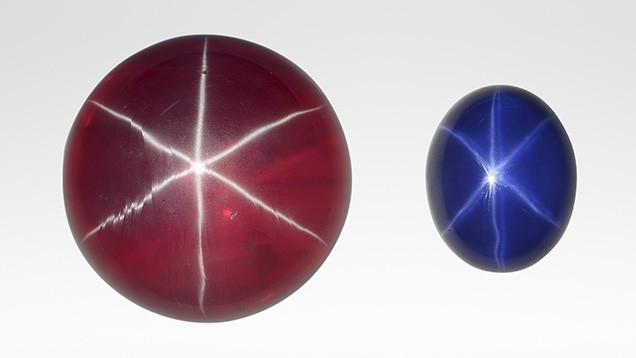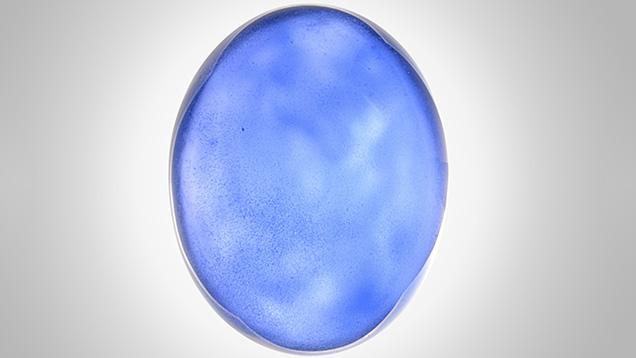Large Laboratory-Grown Star Ruby and Sapphire

The Tokyo lab received for a Quality Assurance report two unusually large loose stones with asterism. One was a 4,759 ct red sphere (figure 1, left) with a diameter of approximately 76.96 mm, and the other a 467.2 ct blue cabochon measuring approximately 52.04 × 42.29 × 20.89 mm (figure 1, right).

These stones both had a spot refractive index of 1.77 and were doubly refractive with a uniaxial interference figure. The red sphere displayed a ruby spectrum with a handheld spectroscope. Microscopic observation showed curved bands of gas bubbles, cottony structure on the surface, and Plato striations (figure 2), providing proof of a laboratory-grown star ruby. The cottony structure indicates the possibility of diffusion treatment. The blue cabochon displayed a faint blue sapphire spectrum with the handheld spectroscope. It had a mottled blue color in diffused light (figure 3). Apparently it was a titanium-diffused colorless synthetic sapphire polished to produce asterism. As a result of polishing, the blue color is concentrated on the flat bottom and mottled on the curved top. This is visible when viewed from the side. Microscopic observation showed curved bands of gas bubbles, proof of laboratory growth.

As Schmetzer et al. summarized (“Dual-color double stars in ruby, sapphire, and quartz: Cause and historical account,” Summer 2015 G&G, pp. 112–143), the Czochralski pulling technique can produce large crystals. These crystals have a uniform distribution of color and titanium-bearing precipitates compared to other growth methods, and they can be cut from any part of the crystal, regardless of size. Therefore, this laboratory-grown star ruby was most likely produced by the pulling technique. Also, this specimen was too large to have been produced by flame fusion. Detailed information on these two items is not available, but they are probably similar products.
Synthetic star corundum is not rare, but these were among the largest laboratory-grown star rubies and star sapphires submitted to the GIA laboratory.



